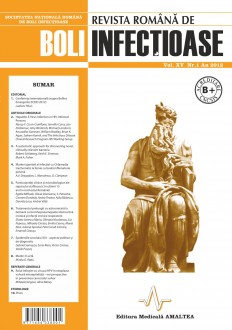SELECT ISSUE

Indexed

| |

|
|
|
| |
|
|
|

|
|
|
|
|
|
| |
|
|
HIGHLIGHTS
National Awards “Science and Research”
NEW! RJID has announced the annually National Award for "Science and Research" for the best scientific articles published throughout the year in the official journal.
Read the Recommendations for the Conduct, Reporting, Editing, and Publication of Scholarly work in Medical Journals.
The published medical research literature is a global public good. Medical journal editors have a social responsibility to promote global health by publishing, whenever possible, research that furthers health worldwide.
A SYSTEMATIC APPROACH FOR DISCOVERING NOVEL, CLINICALLY RELEVANT BACTERIA
Robert Schlaberg, Keith E. Simmon and Mark A. Fisher
ABSTRACT
Sequencing of the 16S rRNA gene (16S) is a reference method for bacterial identification. Its expanded use has led to increased recognition of novel bacterial species. In most clinical laboratories, novel species are infrequently encountered, and their pathogenic potential is often difficult to assess. We reviewed partial 16S sequences from >26,000 clinical isolates, analyzed during February 2006 – June 2010, and identified 673 that have <99% sequence identity with valid reference sequences and are thus possibly novel species. Of these 673 isolates, 111 may represent novel genera (<95% identity). Isolates from 95 novel taxa were recovered from multiple patients, indicating possible clinical relevance. Most repeatedly encountered novel taxa belonged to the genera Nocardia (14 novel taxa, 42 isolates) and Actinomyces (12 novel taxa, 52 isolates). This systematic approach for recognition of novel species with potential diagnostic or therapeutic relevance provides a basis for epidemiologic surveys and improvement of sequence databases and may lead to identification of new clinical entities.
Key words: bacterial identification, bacterial species
